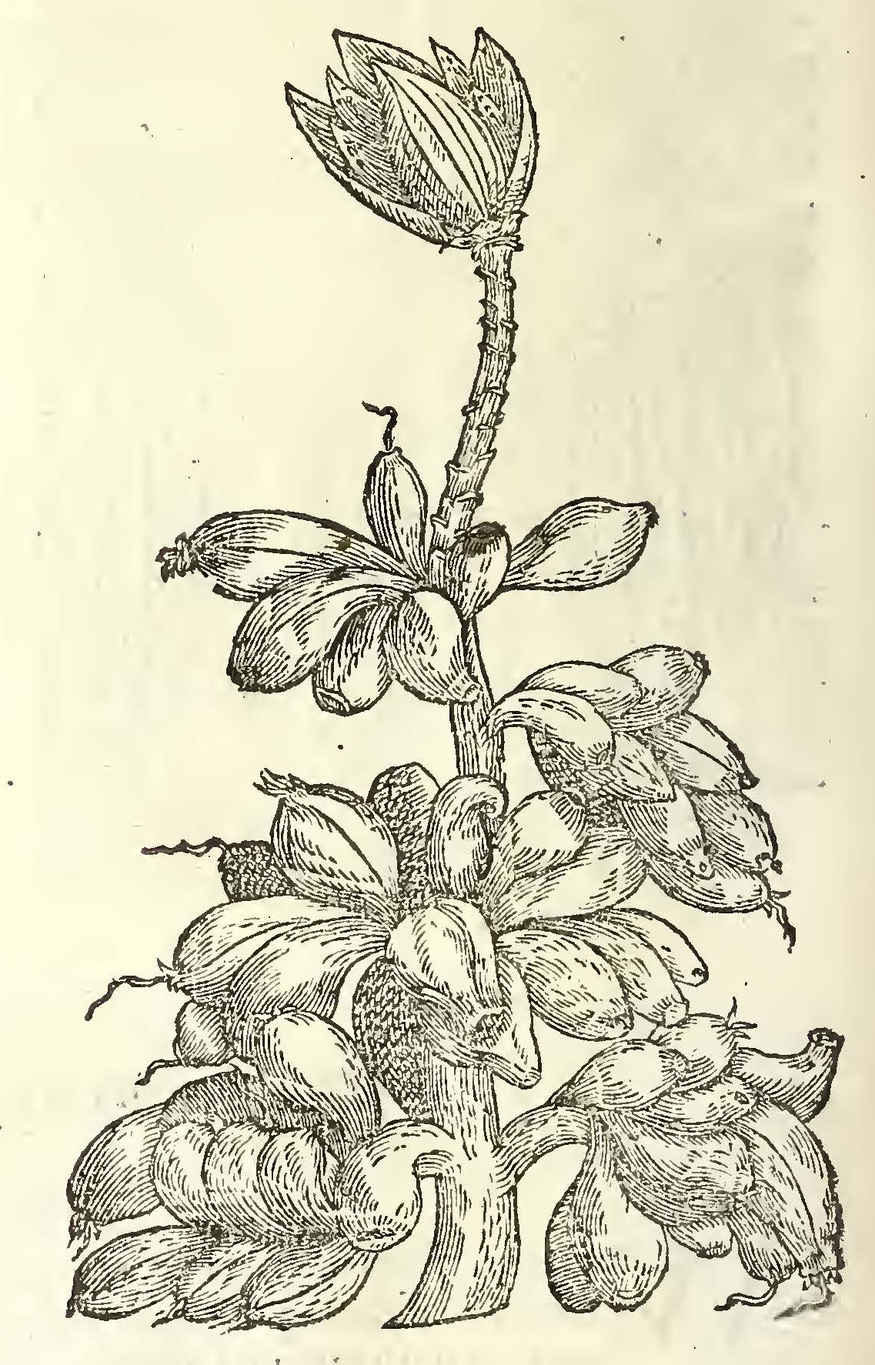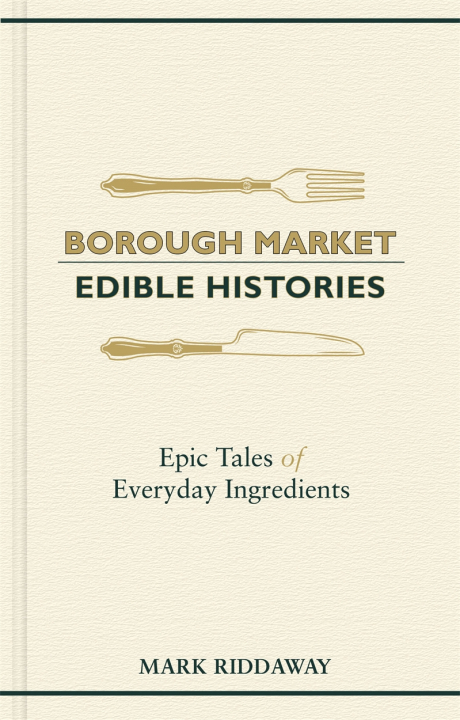In his book Borough Market: Edible Histories, Mark Riddaway takes us on a culinary journey through the surprising and downright bizarre stories behind Britain's most-liked ingredients. Here, he serves up five fascinating moments from London's foodie scene.
1. An Englishman eats a banana

In 1633, the first fresh bananas ever seen in England arrived in London on a boat from Bermuda. One of the recipients was Thomas Johnson, owner of an apothecary and physic garden near Smithfield Market. Johnson, a pioneering field botanist, had spent several years furiously revising The Herball — a book published in 1597 by the Holborn-based herbalist John Gerard. This famous tome, he noted a little cattishly, showed up its author’s “want of sufficient learning”, and Gerard’s chapter on the banana certainly justified Johnson’s dig: Gerard had only ever seen a pickled banana, and his illustration looked very much like the work of a man who was winging it a bit. In his revisions, Johnson recounted his first-hand experience with this weird tropical fruit: “The fruit which I received was not ripe, but greene, each of them was about the bignesse of a large beane… if you turne the upper side downeward, they somewhat resemble a boat.” After hanging the bananas in his shop until “the pulp or meat was very soft and tender, and it did eat somewhat like a muske melon”, Johnson sketched an “exacter figure of the plantaine fruit” — one that, unlike Gerard’s hilarious effort, looked like an actual banana.
2. Ice cream: it'll never catch on

Ice cream was once the poshest of desserts, licked at by the wealthy in grand parlours, the most famous of which — the Sign of the Pineapple on Berkeley Square — was opened in 1750 by an Italian confectioner, Domenico Negri. Here, the city’s elite, including members of the royal family, gathered to consume “all sorts of ice, fruits and creams in the best Italian manner”. Then, in the 19th century, an increase in the availability of ice made the mass production of ice cream increasingly viable. Viable, but not instantly successful. According to Henry Mayhew, who surveyed the London poor in 1851, initial attempts at introducing ice cream as a street food were met with suspicion. One street dealer scoffed at the notion that such a luxury could find a place in his repertoire: “Ices in the streets! Aye, and there’ll be jellies next, and then mock turtle… penny glasses of champagne, I shouldn’t wonder.” Another dealer, who’d had a go at selling strawberry ice creams, was pretty downbeat about the whole experience. “I don’t think they’ll ever take greatly in the streets,” he predicted. “They get among the teeth and make you feel as if you tooth-ached all over.”
3. The Dutch step in to feed London's eel habit

The dominant street food of Victorian London was the eel. In 1854, the essayist David Badham described a city filled with street traders hawking vast quantities of this juicy fish: “London… teems and steams with eels, alive and stewed; turn where you will, ‘hot eels’ are everywhere smoking away.” One of the most remarkable things about the capital’s vast eel habit was where the fish came from. The Thames had once abounded with eels, hence their deep-rooted association with the capital, but as the city grew, so too did the quantity of ordure pouring into the river — and eels don’t cope well with filth. With stocks plummeting, it was the Dutch who stepped in to fill the void. Their vessels, known as ‘schuyts’ (a name that sounds not unlike one of the major Thames pollutants), had large water tanks built into their holds, in which eels could be kept alive for weeks, allowing them to be carried here from all around northern Europe. By midway through the 19th century the Netherlands had a virtual monopoly on the London trade: in 1861, of the 850 tons of eel sold at Billingsgate Market, 800 tons were Dutch.
4. 'Hypocondriack winds' find relief in the City

In 1652, London’s first coffeehouse (described by one chronicler as a “shed”) appeared within the tight warren of alleyways behind St Michael Cornhill in the City. It was at least part-owned by an enterprising immigrant, Pasqua Rosée, who arrived here from Smyrna, then part of the coffee-drenched Ottoman empire. Rosée’s marketing message was strong: one of his handbills suggested that as well as preventing drowsiness (plausibly enough), coffee’s “vertues” included protection against consumption, coughs, dropsy, gout, scurvy, scrofula, miscarriages and the deeply unpleasant-sounding “hypocondriack winds”. In the words of one appalled poet, coffee (a “Turkish renegade”) quickly seduced the English “snap by snap, / As hungry Dogs, do scalding porrige lap”. Coffeehouses were soon springing up all over the city, providing a place for men to gather, talk and make deals while being marginally less drunk than usual. Many of the activities now associated with investment banking, share trading and insurance evolved in London’s these hotspots of caffeinated conversation — the Lloyd’s of London insurance market started life in Lloyd’s Coffeehouse on Tower Street, a popular haunt for merchants and ship-owners.
5. Daniel Defoe watches his Christmas dinner waddle by

The first turkeys arrived in Britain from the New World in the 1530s, and this impressive bird quickly found a place on the Christmas tables of wealthy Londoners. As early as the 1570s, turkey breeding was well established in Norfolk and Suffolk, but getting turkeys from the farms of East Anglia to the busy markets of London wasn’t easy. In the era before refrigeration, turkeys had to be transported here live and, given how few could fit in a cart, predominantly on foot. This led to the surreal sight of massive gangs of fat turkeys waddling along the highways and byways of East Anglia and Essex through autumn and early winter, feeding on the post-harvest stubble of the farms that lined the route. In the 1720s, in one of his journalistic works, the author Daniel Defoe reported that “300 droves of turkeys (for they drive them all in droves on foot) pass in one season over Stratford Bridge on the River Stour”. With an average drove numbering 500 birds, this meant that 150,000 turkeys could be seen toddling along this narrow road over the course of a few months. And you think the A12 is congested now.

Borough Market: Edible Histories by Mark Riddaway, published by Hodder & Stoughton is available to buy now



